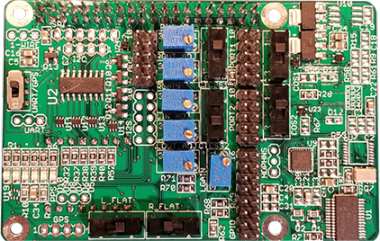
In the electronic components industry, controllers are one of the core components, playing a crucial role in a wide range of electronic devices. With the continuous advancement of intelligent and automation technologies, the applications of controllers have become more widespread. Whether in industrial automation, home appliances, automotive electronics, or consumer electronics, controllers are key in processing information and regulating systems. This article delves into the definition, types, working principles, characteristics, advantages, and applications of controllers.
Catalog
IV. Characteristics and Advantages
I. What Are Controllers?
A controller is a hardware component used to control and regulate various devices or modules within an electronic system. It generates output signals based on input signals (such as sensor data or user commands) and executes preset algorithms or programs to control system actions. Controllers can be standalone chips or integrated circuits, or they can be large modules containing multiple functional units, typically consisting of microprocessors (such as microcontrollers) or digital signal processors (DSPs).
II. Types of Controllers
Depending on the application requirements, controllers can be divided into several types, each with different functions and characteristics:
· Microcontroller (MCU): A highly integrated controller typically made up of a processor, memory (RAM and ROM), and input/output ports. It is widely used in small control systems such as home appliances, automobiles, and medical devices.
· Digital Signal Processor (DSP): A processor specialized in handling digital signals, suitable for high-speed data processing in areas like audio, image, and video, such as in audio equipment and communication systems.
· Programmable Logic Controller (PLC): Common in industrial control, PLCs are used in automated production lines and are known for their high anti-interference capability and flexibility.
· Field-Programmable Gate Array (FPGA): A highly programmable hardware device with flexibility and efficient parallel processing capabilities, commonly used in applications requiring custom hardware acceleration.
· Embedded Controllers: Embedded controllers are directly integrated into the electronic devices, commonly seen in smart homes, consumer electronics, and smart hardware.
III. Working Principle
The working principle of a controller primarily relies on the collection of input signals, data processing, and generation of output signals. First, the controller receives external signals through sensors or input ports, which can include temperature, pressure, speed, or position data. Then, the controller performs calculations and judgments based on preset algorithms, and finally, outputs the corresponding control signals to drive actuators or other components to perform actions. Controllers can also communicate with other systems to execute more complex control tasks.
IV. Characteristics and Advantages
· High-Precision Control: Controllers can process complex input signals quickly and accurately, ensuring that the system reaches the desired operating state.
· Flexibility and Programmability: Many controllers (such as microcontrollers and PLCs) are programmable, allowing for adjustment according to different application scenarios and offering strong adaptability.
· Low Power Consumption: Many controllers, especially microcontrollers, are designed with low power consumption, making them ideal for battery-powered portable devices.
· Real-Time Response: Controllers have strong real-time processing capabilities, enabling them to quickly respond to changes in the external environment. This is especially useful in high-demand automation control systems.
· High Reliability: Controllers are usually designed to have high anti-interference capabilities, especially in industrial environments, ensuring stable operation in harsh conditions.
V. Applications
Controllers are widely used across various industries. Here are some typical fields of application:
· Industrial Automation: In production lines, robots, and automated equipment, controllers manage and control the operation of various mechanical devices, enabling automated production.
· Automotive Electronics: In modern automobiles, controllers are used in engine management, body control, safety systems (such as airbags, ABS), in-car entertainment systems, and more.
· Consumer Electronics: In devices such as smartphones, tablets, and smart TVs, controllers coordinate the functions of various modules, handling tasks like display, sound processing, and sensor data.
· Smart Homes: Smart home devices (such as smart air conditioners, lighting, and security systems) use embedded controllers for data collection, automatic adjustments, and remote control.
· Medical Devices: Controllers in medical equipment precisely regulate the operation of devices to ensure patient safety. Common applications include patient monitors and smart diagnostic devices.
· Communication Equipment: In the communication sector, controllers manage signal modulation and demodulation, data transmission, and network management.
VI. Conclusion
As core components in electronic systems, controllers are efficient, intelligent, and programmable, with applications across industries like industrial automation, home appliances, automotive electronics, and consumer electronics. With the rapid development of technologies like the Internet of Things (IoT), Artificial Intelligence (AI), and smart manufacturing, the future of controllers looks even more promising. They will trend toward greater intelligence, integration, and efficiency. For example, future controllers may integrate more sensor interfaces, support wireless communication and cloud computing, and have stronger computing and data processing capabilities. Additionally, controllers will play an increasingly important role in emerging fields like smart transportation, autonomous driving, and smart homes.




